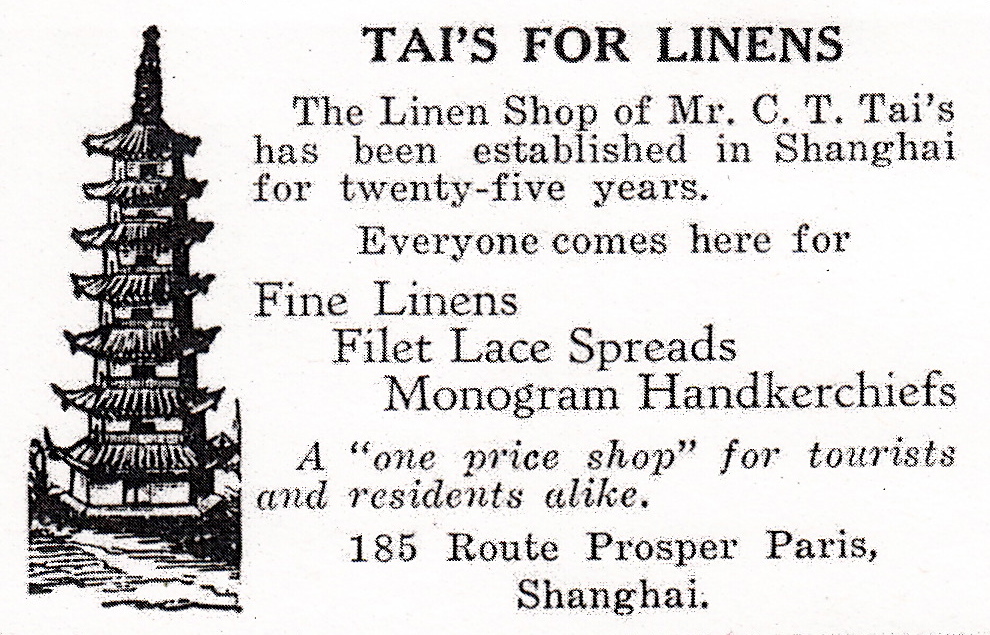Posted: September 19th, 2016 | No Comments »
A picture from the French magazine Voila of Shanghai’s Quai de France (the French Bund or now Zhongshan No.2 Road East) from the Gutzlaff Tower. The Quai is now not nearly so busy of course, the buildings along the Quai are all gutted with just one or two poor restorations and the Gutzlaff Signal Tower was moved 23m north to its current location in 1993 and cladded with white tiles in 1999 – nice to see the original (or at least the third incarnation of the Tower, after two previous towers from 1865 and 1884, completed in 1907. Although in the French Concession the tower in its present form was built by the Dutch (and is about the Netherlands only contribution to Shanghai’s architectural heritage).
For some reason the invariably questionable Wikipedia has the Tower labelled as art-deco. Being constructed in 1907 this is of course nonsense, though the more recent cladding and painting might indicate an attempt to art-deco-ise the structure. Those of long enough vintage will remember that it was the Police Station for the Bund from the 1950s through to the early 1990s, then, around 1993, hosted the Bund Exhibition and is now, I think, a cafe of some sort.
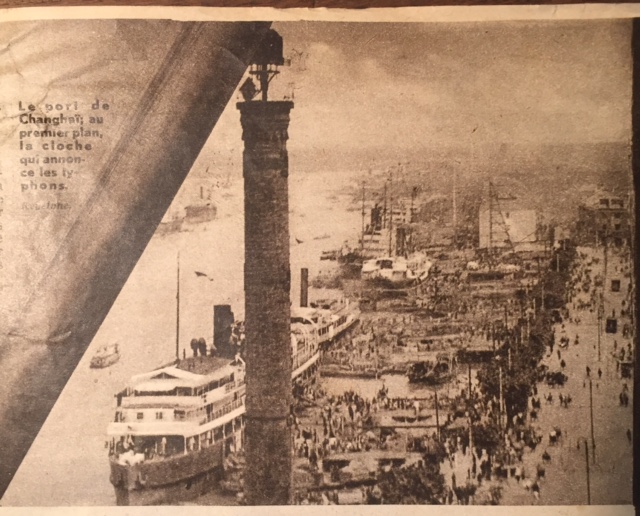
Posted: September 19th, 2016 | No Comments »
Cosmopolitanism at Dunhuang: Two 6th century Buddhist Grottoes

Among the nearly 500 Dunhuang grottoes, two caves in particular stand out. Dating from the 6th century, Mogao caves #249 and #285 are unique for their remarkable synthesis of images and concepts. Here Indian deities blend seamlessly with Chinese bronze-age motifs and Daoist immortals that are in turn peppered with themes from classical Greece and Rome, all of which is framed by Buddhist goals of transcendence. Dr. Neil Schmid explores how these seemingly disparate cultural elements came together coherently for the patrons and donors who created these shrines — and how these two grottoes are striking testaments to the eddies and flows of culture and ideas that swept across Eurasia during the early medieval period resulting in remarkably sophisticated and cosmopolitan creations along the Silk Road.
WHAT:Cosmopolitanism at Dunhuang: Two 6th century Buddhist Grottoes
WHEN:Saturday, Sept. 24, 2016 from 7:30-9:00 PM
WHERE:The Courtyard Institute, Â #28Â Zhonglao Hutong, Dongcheng
COST:RMB 50
RSVP:events@rasbj.org and please write “Dunhuang” in the subject header
MORE ABOUT THE SPEAKER: Neil Schmid is a specialist in Chinese Buddhism and Dunhuang Studies. After completing an M.Phil at the École pratique des Hautes Études in Paris and his Ph.D. at the University of Pennsylvania, he taught at UNC, Duke, and Penn, publishing on Chinese Buddhism, art, andDunhuang. Neil is currently Associate Fellow at the Centre for the Study of Religion and Culture in Asia, University of Groningen, Netherlands, and as of 2016 Guest Professor in the Department of Art History, University of Vienna.
Posted: September 17th, 2016 | No Comments »
Soviet Koreans in Uzbekistan: Surviving and Prospering Through the Ordeal
a talk by Victoria Kim

In August 1937, Joseph Stalin decided to deport ethnic Koreans from the Soviet Union’s Far East to Central Asia. In less than two months, over 170,000 people were loaded on cargo trains and transported to Uzbekistan and Kazakhstan on a horrendous journey across Siberia. Almost 80 years later, over half a million ethnic Koreans still live in the former Soviet Union, mostly in Uzbekistan, Kazakhstan and Russia. Their tragedies are also stories of courage and survival that echo in the present-day global drama of forced migration. Victoria Kim’s grandfather came to Uzbekistan in 1937 as a seven-year-old boy on a cattle train. His life story – together with accounts of other Korean deportees – inspired Victoria to produce her multimedia documentary long-read “Lost and Found in Uzbekistan: The Korean Storyâ€. She will talk about this unique diaspora in a region still unknown to many; London Times correspondent Calum MacLeod will moderate.
WHAT: “Soviet Koreans in Uzbekistan: Surviving and Prospering Through the Ordeal”, a talk by Victoria Kim
WHEN: Tuesday, Sept.27, 2016 from 7:30-9:00 PM
WHERE: The Bookworm [link]
COST: RMB 65 for members of the RASBJ or Bookworm, RMB 75 for non-members.
RSVP: email order@beijingbookworm.com and please write “Soviet Koreans” in the subject header
MORE ABOUT THE SPEAKER: Victoria Kim holds a MA from the Johns Hopkins University’s SAIS in Korean Studies and MA from the University of Bolton in International Multimedia Journalism. Originally from Tashkent, Uzbekistan, she is currently based in Beijing, China, as a multimedia writer and producer. Currently, Victoria is working on a full-format documentary movie based on her stories.

Posted: September 16th, 2016 | No Comments »
Weirdly I was at one of those boutique hotels the other week where they think it chic to give you the bill inside an old (ish) book – it’s a bit old hat and twee – every third rate tea shop in every seaside town does it now – but never mind. I happened to get my bill inside a copy of The Mercenaries, a long forgotten read.
British author John Harris (aka Mark Hebden) wrote The Mercenaries in 1969 (it was published in the US as The Jade Wind). It concerns China and the fledgling days of China’s air force in the 1920s. Here’s the jacket blurb – Ira Penaluna (Harris wrote a series of books with this character), First World War pilot, sees his airline go bankrupt in Africa and grabs at the chance to instruct pilots in China. But Ira hasn’t reckoned on the beat-up, burnt-out wrecks he is expected to teach his students in, or on the fact that his pupils speak no English. Though aided and abetted by an enthusiastic assistant, an irresponsible Fagan and his brooding American girlfriend Ellie, Ira finds himself playing a deadly game, becoming embroiled in China’s civil war. The four are forced to flee but the only way out is in a struggling pile of junk flown precariously towards safety. Will they make it?
Harris was one of those authors who set adventure books in all sorts of exotic locales – Africa etc etc. He did a few books in and around China – China Seas is a pretty good pulp pirates novel


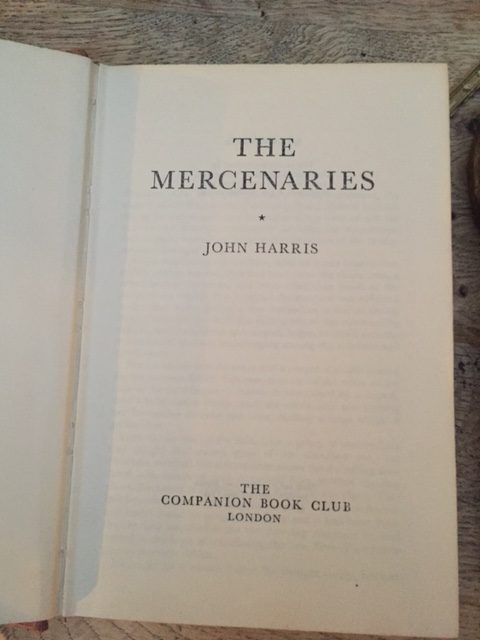
Posted: September 15th, 2016 | 1 Comment »
If anyone can tell me anything about SWETCO I’d be interested to know – certainly active in the 1930s selling (and manufacturing?) housewares. After that, I got nothing!!
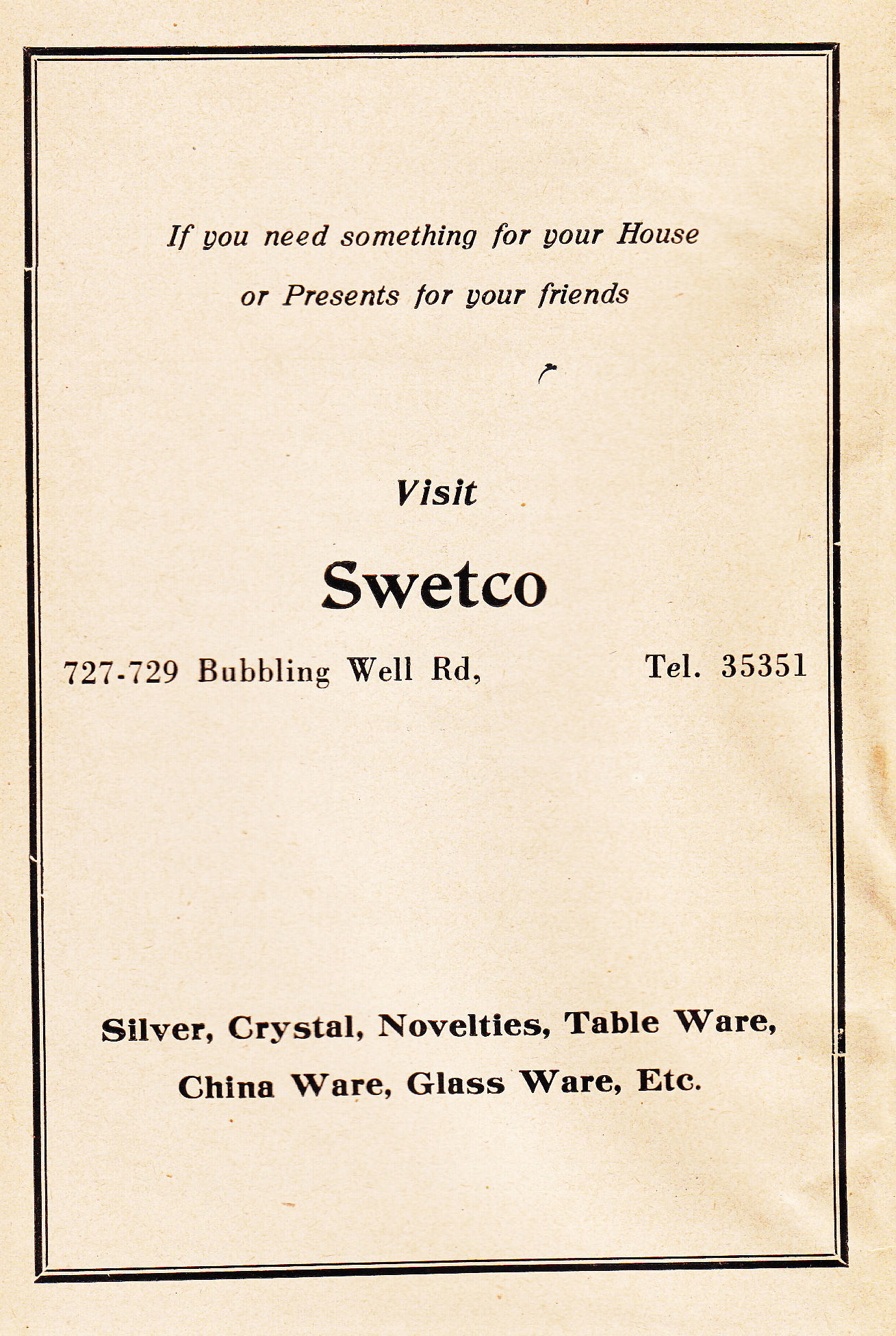
Posted: September 14th, 2016 | No Comments »
While working on my next book (out next year) I got sidetracked somewhat in researching and following the lives and journeys of a number of Shanghai-based Jewish refugees in the late 1930s and during World War Two who moved on to “neutral” Macao hoping that from there they could get to some form of sanctuary – preferably a boat to neutral Portugal and from there to America or Britain. There were ways to Macao from the “Solitary Island” of Shanghai in WW2 while the British retained a Consulate in Macao (the only one between India and Australia) throughout the war. There were some desperate stories and some daring escapes, including back into “Free” China via remote and now mostly forgotten the French treaty port of Kwangchowan (now Guangzhouwan) and its tiny capital Fort Bayard. I think the whole Jewish refugee experience in Macao has been forgotten largely, certainly against the larger tales of defeat and internment in Hong Kong and the recollections of the Shanghai Ghetto in the war, so I hope this resurrects some interest in this footnote to the refugee experience in the conflict.
Anyway, never wishing to waste anything, I’ve put a lot of this research and anecote together in a piece of creative non-fiction – Strangers on the Praia – for the current September 2016 issues (no.33) of the Hong Kong-based Cha: An Asian Literary Journal. You can read it online – Strangers on the Praia is here and the entire issue here.
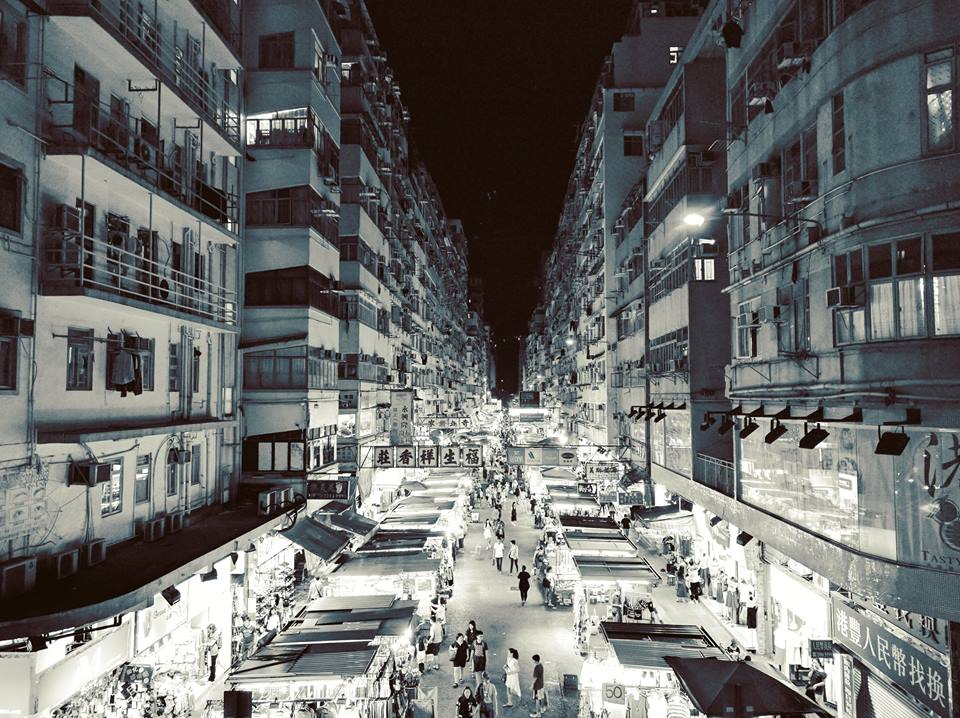 The issues great cover – “Do Mong Kok Dream of Neon Sheep? AKA Blade Running in Mong Kok” by Holden Liang
The issues great cover – “Do Mong Kok Dream of Neon Sheep? AKA Blade Running in Mong Kok” by Holden Liang
Posted: September 13th, 2016 | 1 Comment »
I’ve written about Marjorie Hessell Tiltman, the wife of Hugh Hessell Tiltman, a well known journalist (and probably British spy) in 1930s China. Marjorie shared a good deal of Hugh’s China adventures with him. After laving China in the early 1930s the Hessell Tiltman’s settled in Sussex and Marjorie wrote a book about their rural English life Cottage Pie (more here from my previous post on Marjorie). The other day I came across this book by Marjorie I had not been aware of before, published in 1935 it showed she never lost her taste for adventure….it’s also a very stylish cover I think and rare to find a copy with the jacket intact these days…
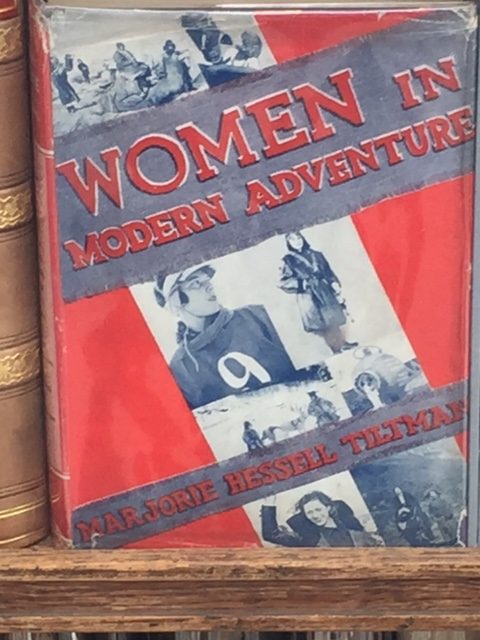
Posted: September 12th, 2016 | No Comments »
Tai’s for Linens – Mr C.T. Tai’s store opened around 1910-1912 on Route Prosper Paris in Shanghai’s Frenchtown (Tianping Road now) on the far western side of the French Concession close to Siccawei (Xujiahui now). “One price” I take it refers not to everything being one price (the contemporary meaning) but that tourists and Shanghailanders were guaranteed the same prices as locals (though probably unlikely in the actualite, as the French say). Tai’s main competition was the linen shops (and underwwear sellers) over on Yates Road (Shimen No.1 Road these days), known locally as “Pantie Alley”. The shop was a retail outlet for C.T. Tai & Sons (Manufacturers and Exporters), Embroidered Linens, who produced monogrammed handkerchiefs etc.
